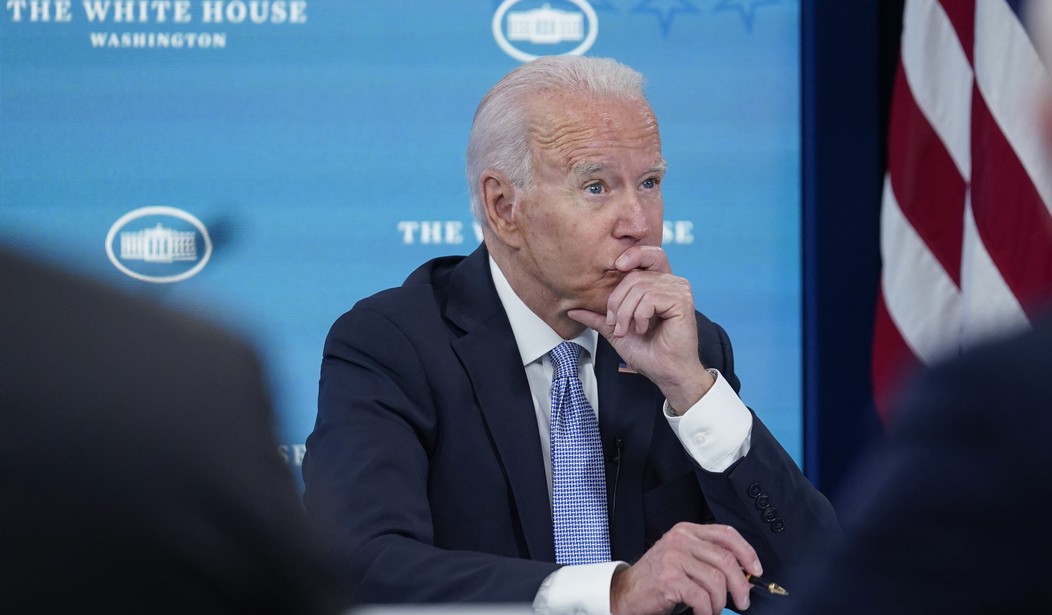Color me entirely unsurprised that the consequences of shutting down complicated supply-chain systems can’t be fixed with a few extra shifts. After Joe Biden and his team spent months dithering on those issues, they have suddenly decided that Biden needed to something as consumers and retailers look at a potentially miserable Christmas.
That “something” turns out to be nothing much at all, experts scoff and the Washington Post reports:
Administration officials promise a “90-day sprint” to clear a path for cargo. Several companies participating in the White House event will make “specific volume commitments” about containers they will remove from California docks. Leaders of the International Longshore and Warehouse Union have agreed to work longer hours, provided individual terminal operators pay up.
But the extended hours the administration is touting represent something less than the full round-the-clock operations that are typical of the world’s most advanced cargo-moving facilities.
The Port of Long Beach, which makes up one half of the nation’s chief import gateway, began a pilot program last month of late-night and predawn work. An administration official said Tuesday that Long Beach had “already gone to 24-7″ and Los Angeles would be “meeting that effort.” But only one of the Long Beach port’s six container terminals works 24 hours a day, and it does so only Monday through Thursday, according to Noel Hacegaba, the port’s deputy executive director.
Phillip Sanfield, a spokesman for the port of Los Angeles, which is adjacent to the Long Beach facility, said Tuesday he could not say how many L.A. terminals will now begin operating around the clock. But some industry executives described the administration’s latest initiative, which the White House billed as “nearly doubling” the port’s cargo-handling hours, as incomplete. Matt Schrap, chief executive of the Harbor Trucking Association, whose members service the ports, said the measure will make a “big difference” only if terminals abandon requirements for truckers to return a specific type of empty shipping container before collecting a full one.
And Craig Grossgart, senior vice president for global ocean at SEKO Logistics, said: “It will accomplish zero. It’s just window dressing.”
One reason is that truckers and other principals in the nation’s goods-distribution system won’t provide enough capacity to move that material:
The administration says the giant companies will set an example that will spur others to follow. But longer working hours at the neighboring ports, which operate as a single complex under dual management, will matter only if trains, trucks and warehouses all do the same. Already, truckers have been reluctant to show up at the Long Beach port during the 3 a.m.-to-7 a.m. slot known as the “hoot” shift — named for the hoot owl — because they have nowhere to take containers at that hour.
NBC News reports that retail giants have begun putting their own workarounds in place, but that raises more potential problems:
The officials said that UPS and FedEx combined to ship 40 percent of U.S. packages by volume last year and that by taking this step, “they’re telling the rest of the supply chain you need to move it, to let’s step it up.”
Other retailers, such as Target, Samsung and Home Depot, will also assist with the backlog, which “paves the way for smaller retailers to also get the goods from a 24/7 model,” the officials said.
Er … does it? Or does it threaten to swamp out smaller retailers while benefiting the largest players that can afford to spend the money on logistical alternatives? There’s nothing wrong with companies acting in their own self-interest, but it’s very much a stretch to expect that to play out altruistically in any fashion. The biggest shops will get the biggest inventory while smaller competitors will have to deal with shortages for longer.
Biden’s approach to the problem doesn’t have many other people convinced, either. The WaPo’s David Lynch notes that Bed Bath & Beyond doesn’t expect any significant improvements to supply-chain problems until after Thanksgiving at the earliest, past Black Friday and the retail industry’s biggest benchmark day of the year. And Barclay’s used a 1970s term to describe the situation:
Barclays economists this week lowered their growth forecast for the United States and Europe, citing enduring supply interruptions.
“These persistent supply disruptions are a stagflationary impulse to the global economy, as they now increasingly also affect activity, after having already caused stubbornly higher-than expected inflation,” Barclays wrote in a research note, referring to the 1970s phenomenon of soaring prices and anemic growth.
As I have written before, Joe Biden is busy taking us back to That 70’s Show — the one starring Jimmy Carter, not Ashton Kutcher and Mila Kunis. Had Trump gotten re-elected, he would have faced similar issues, but likely would have prioritized policy responses to it. It seems unlikely that Trump and his team would have let ships pile up outside Los Angeles to the point where they could no longer find anchorage, especially with the impact it has had on the economy. Trump also would have been less inclined to slide into vaccine mandates that may well complicate efforts to expand supply-chain activities, as personnel become more difficult to find.
Instead, we get performance art from the White House rather than serious policy changes and resources to fix the problem. The end result will be profoundly regressive, as inflation eats away at buying power for lower-income Americans and bargains become almost impossible to find. Small retailers will likely fail at a higher rate in the shortage environment as big-box retailers build their own dedicated logistics. As that progresses, expect Joe Biden’s approval ratings to decline even further, perhaps into actual Grinch territory.








Join the conversation as a VIP Member